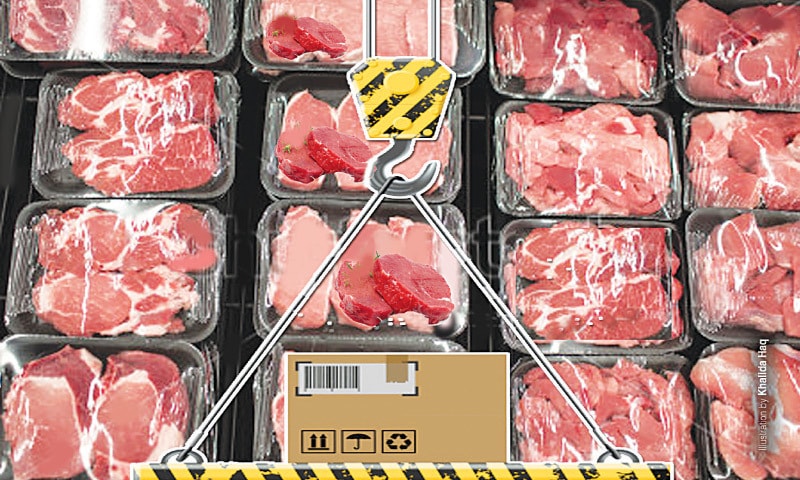MOST of the country’s agriculture and livestock products are being traded and exported — without any regard for standard, quality or value-addition — and are thus performing much below their potential.
This was highlighted by stakeholders of the red-meat industry who had gathered at the University of Veterinary and Animal Sciences earlier this month.
With almost 90pc of the country’s red meat going to the Gulf, Pakistan’s exports are still hovering around 25,000 tonnes in a global trade of 9.9m tonnes, which is poised to touch 11.9m tonnes by 2022 according to the Food and Agriculture Organisation’s (FAO) estimates.
The pattern of Pakistan’s chilled red meat exports defines low-value addition: around 88pc of them go in the shape of carcasses to the low-end (ethnic) market in the Gulf countries. Only 8.2pc of them comprise bone-in cuts and 0.7pc boneless cuts (where some kind of value-addition is involved).
Meanwhile, exports of frozen red meat are almost negligible. On the other hand, China, with its massive population and expected growth of 6.6pc and its high preference for pork, is still projected to keep consuming 22pc of the global red meat market.
Despite such low numbers, the exporters think they have hit the plateau. Given the individual players’ limited knowledge of the global corporate environment, only the government can help the industry from this point. It can develop and enforce domestic standards and help the industry align its production lines to international demands and sensitivities.
If the government does that, Pakistan has the potential to quickly multiply its current export value of $251m to over $1bn, say stakeholders.
The University of Veterinary and Animal Sciences recently developed standards for 18 varieties of red-meat cuts, depending on the thickness and juiciness of the local meat, but there is no official body to enforce these standards
Pakistan, with a cattle population of 39.7m that is growing 3.65pc a year, has an enormous supply pool that can satiate export demand. For instance, at 34.6m, the country’s herd of buffaloes is growing at a rate of 2.65pc.
Punjab, which has 19.45m cattle (49pc of the country’s total, excluding buffaloes) and 22.49m buffaloes (65pc), particularly needs to help meat exports grow on a long-term basis.
Currently, Pakistan is wasting this huge resource by slaughtering calves, which hardly weigh 60-70kg, against their total potential of 500kg.
Though small, sporadic efforts are being made, they need to be institutionalised. For example, the University of Veterinary and Animal Sciences recently developed standards for 18 varieties of red-meat cuts, depending on the thickness and juiciness of the local meat, but there is no official body to enforce these standards.
The quarantine department, the only body that checks meat exports right now, only evaluates and certifies consignments against diseases, instead of conducting any quality assessment.
As suggested at the meeting, if the government gets China’s permission to export through the land route, Pakistan’s meat exports could multiply.
Similarly, if the government could arrange a dedicated fast moving vessel for just the UAE, it could reduce the freight charges for exporters from Rs80/kg to Rs15/kg, thus allowing the exports to become more competitive.
Published in Dawn, Business & Finance weekly, December 21st, 2015














































